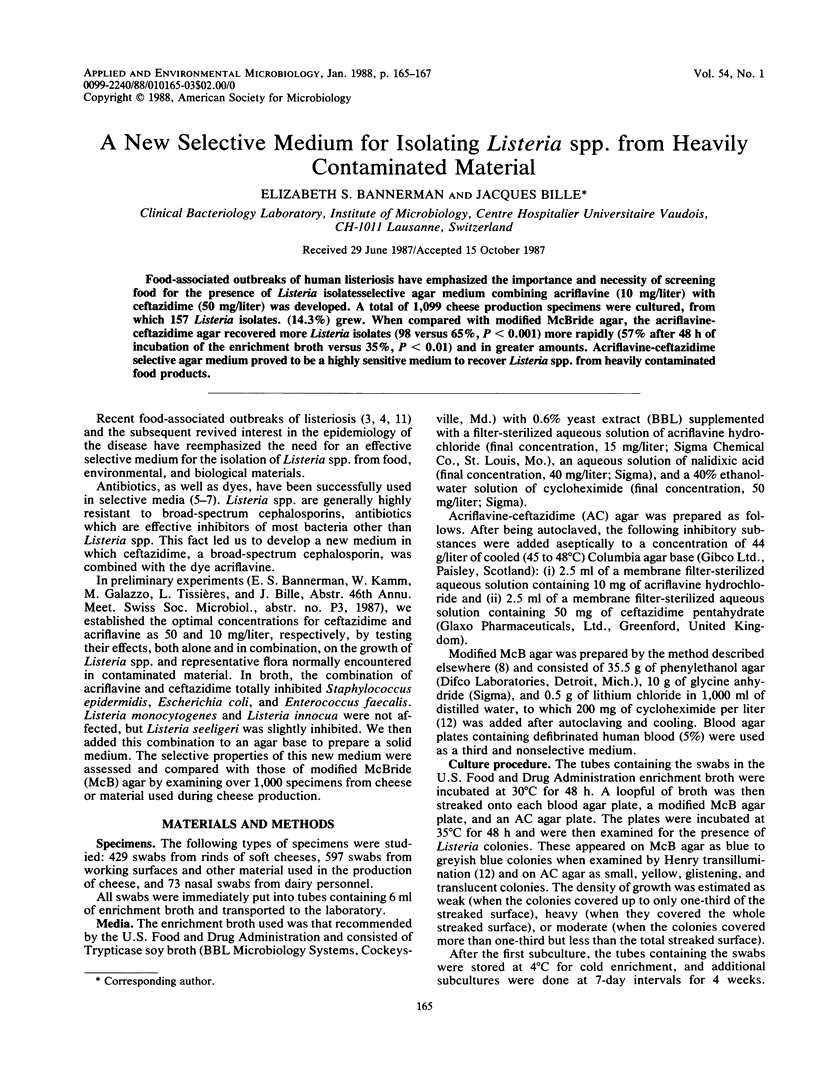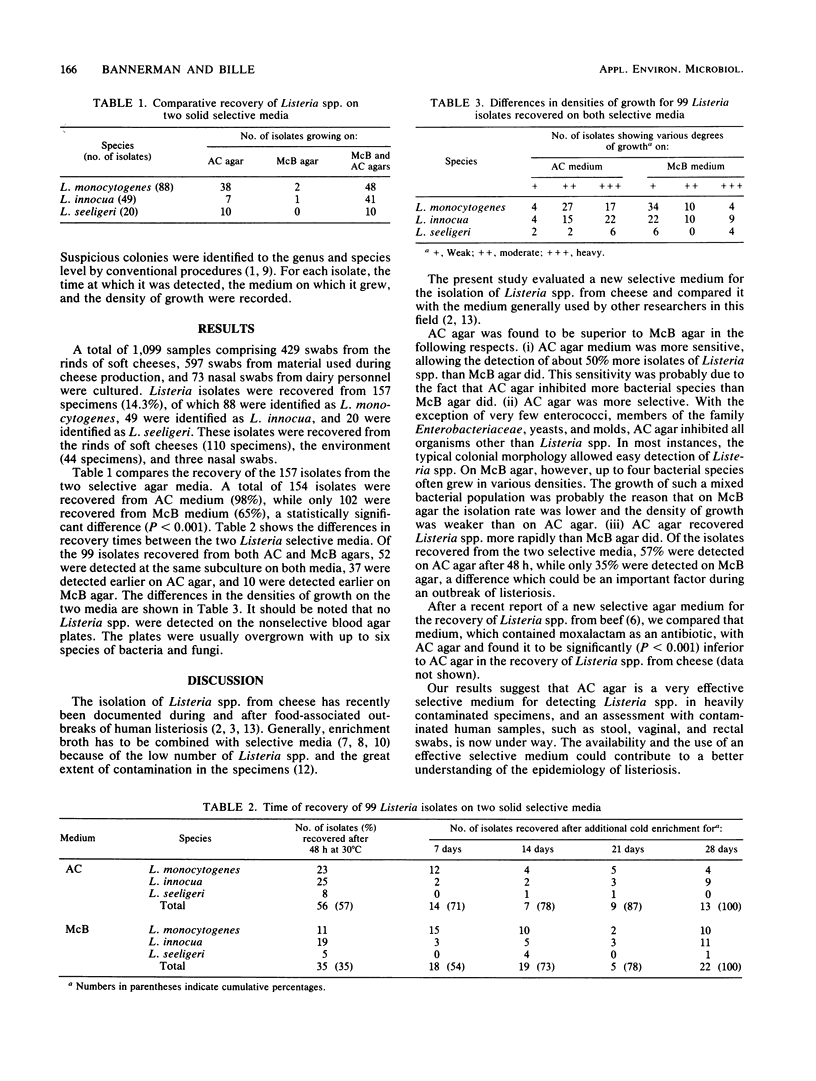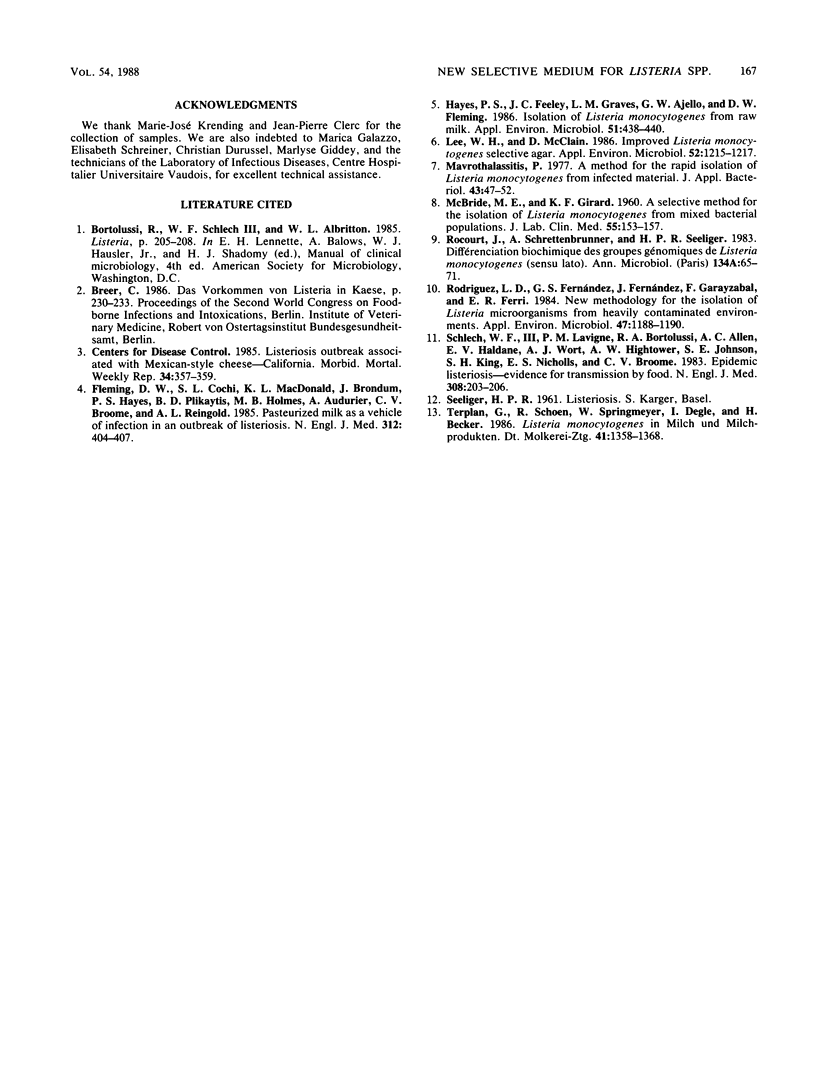Abstract
Food-associated outbreaks of human listeriosis have emphasized the importance and necessity of screening food for the presence of Listeria isolates-selective agar medium combining acriflavine (10 mg/liter) with ceftazidime (50 mg/liter) was developed. A total of 1,099 cheese production specimens were cultured, from which 157 Listeria isolates. (14.3%) grew. When compared with modified McBride agar, the acriflavine-ceftazidime agar recovered more Listeria isolates (98 versus 65%, P less than 0.001) more rapidly (57% after 48 h of incubation of the enrichment broth versus 35%, P less than 0.01) and in greater amounts. Acriflavine-ceftazidime selective agar medium proved to be a highly sensitive medium to recover Listeria spp. from heavily contaminated food products.
Full text
PDF


Selected References
These references are in PubMed. This may not be the complete list of references from this article.
- Dominguez Rodriguez L., Suárez Fernández G., Fernández Garayzabal J. F., Rodriguez Ferri E. New methodology for the isolation of Listeria microorganisms from heavily contaminated environments. Appl Environ Microbiol. 1984 May;47(5):1188–1190. doi: 10.1128/aem.47.5.1188-1190.1984. [DOI] [PMC free article] [PubMed] [Google Scholar]
- Fleming D. W., Cochi S. L., MacDonald K. L., Brondum J., Hayes P. S., Plikaytis B. D., Holmes M. B., Audurier A., Broome C. V., Reingold A. L. Pasteurized milk as a vehicle of infection in an outbreak of listeriosis. N Engl J Med. 1985 Feb 14;312(7):404–407. doi: 10.1056/NEJM198502143120704. [DOI] [PubMed] [Google Scholar]
- Hayes P. S., Feeley J. C., Graves L. M., Ajello G. W., Fleming D. W. Isolation of Listeria monocytogenes from raw milk. Appl Environ Microbiol. 1986 Feb;51(2):438–440. doi: 10.1128/aem.51.2.438-440.1986. [DOI] [PMC free article] [PubMed] [Google Scholar]
- Lee W. H., McClain D. Improved Listeria monocytogenes selective agar. Appl Environ Microbiol. 1986 Nov;52(5):1215–1217. doi: 10.1128/aem.52.5.1215-1217.1986. [DOI] [PMC free article] [PubMed] [Google Scholar]
- Mavrothalassitis P. A method for the rapid isolation of Listeria monocytogenes from infected material. J Appl Bacteriol. 1977 Aug;43(1):47–52. doi: 10.1111/j.1365-2672.1977.tb00720.x. [DOI] [PubMed] [Google Scholar]
- Rocourt J., Schrettenbrunner A., Seeliger H. P. Différenciation biochimique des groupes génomiques de Listeria monocytogenes (sensu lato). Ann Microbiol (Paris) 1983 Jan-Feb;134A(1):65–71. [PubMed] [Google Scholar]
- Schlech W. F., 3rd, Lavigne P. M., Bortolussi R. A., Allen A. C., Haldane E. V., Wort A. J., Hightower A. W., Johnson S. E., King S. H., Nicholls E. S. Epidemic listeriosis--evidence for transmission by food. N Engl J Med. 1983 Jan 27;308(4):203–206. doi: 10.1056/NEJM198301273080407. [DOI] [PubMed] [Google Scholar]


